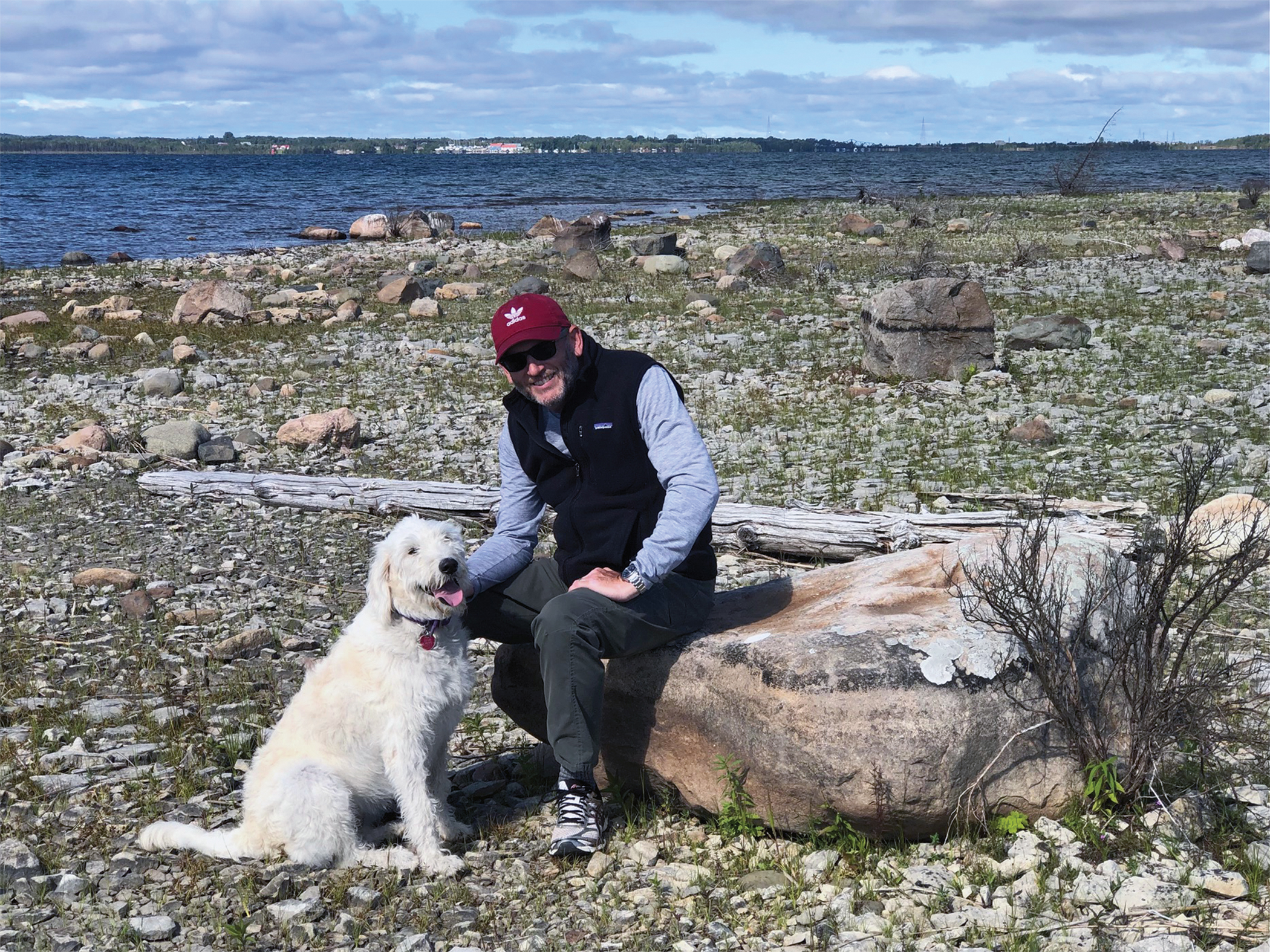Neuroendocrine Tumor Survivor
Grateful survivor uses experience to encourage others

Retired palliative care and family physician Dr. Jim Gaffney understands the challenges of managing a rare neuroendocrine tumor (NET) diagnosis. As a board member and peer navigator for Friend for Life Cancer Support Network, he uses his experience to help others as they navigate their diagnosis and treatment.
Like many cases of neuroendocrine tumors (NET), mine was not a fast diagnosis. I’d had back pain for years, but it typically lasted less than a minute. In 2012, after a severe episode lasted for 30 minutes, I went in for a thorough workup, including a CT and a camera endoscopy. The results of the endoscopy pointed to Crohn’s disease, and I was started on medication for it. But the CT scan showed enlarged lymph nodes next to my ileum. Being a doctor, I knew that wasn’t common with Crohn’s disease, and my doctor agreed. He scheduled a laparoscopic biopsy. As it turns out, the biopsy couldn’t be done laparoscopically. Instead, I woke up to a surgical incision from where they’d not only done a biopsy -- they removed a neuroendocrine tumor (NET). I was 52 years old.
My wife Cindy and I were shocked to learn it was cancer. Learning that this type of carcinoid tumor was incurable was probably the biggest hurdle. Next was telling our family and friends. We had two children who had graduated college the week before, and I was in a busy medical practice and attending grad school, so we had kept my appointments fairly quiet. I hadn’t shared my suspicions that it may be something serious. That made telling them that I had cancer even more difficult.
I consulted with local oncologists whom I knew and respected, and because it was such a rare diagnosis, I also sought another opinion with a NET specialist located about an hour away. He reviewed my pathology results and ran additional tests, including one to look at my chemical markers. Because it was very early in the life of the disease, he recommended monitoring every six months to check for progression.
For three years, life went on just as it had before. I finished grad school and took a position with more responsibility at another practice. Both Cindy and I felt anxious before my follow-up appointments. What would we find? We knew it would progress, and not knowing when was nerve-wracking. Cindy walked and biked to keep her mind occupied. The occasional glass of wine the day before finding out the results and keeping our good senses of humor didn’t hurt either.
In 2015, follow-up testing showed the cancer had metastasized from where it began in the ileum. I had mets in the peritoneum and liver. It was now considered Stage IV, and it was time to begin treatment.
By that time, my NET specialist and I had moved to different cities. Luckily, our new home wasn’t far from a NET specialty clinic at a university cancer center. I began working with a multidisciplinary team there who all had experience working with NETs. I had a local oncologist, too, and the two worked together on my care plan.
About a year earlier, research on a first-line therapy drug called a somatostatin analog showed promise in preventing progression of NETs and controlling the symptoms created by the hormone-like substances released by a NET. I began the monthly injections. Fortunately, I could get them from my local oncologist and then see my specialist when necessary.
Between the drug therapy and the disease, I’ve had to manage some symptoms and side effects. I developed mild diabetes, which I control through diet and an oral diabetes medication. Abdominal pain has been intermittent, probably secondary to partial bowel obstructions. The fatigue I feel is more of a challenge, and it continues to worsen. It forced me to retire early. And though Cindy and I really enjoy the extra time we have together now, our lifestyle has changed. Traveling must be scheduled around my frequent appointments. I am typically too worn out to do much after mid-afternoon, and an unplanned early retirement wasn’t part of our financial plan. In spite of that, Cindy is no longer working so we can make the most of being together.
Having such a rare form of cancer poses another challenge: educating people about NETs. Most of our friends have never heard of NETs and those that have don’t view it as a very serious condition. I try to explain it simply as a type of cancer that can arise in a number of locations. Often it is slow-growing; sometimes it isn’t. There is no cure, but the goal is to manage it as a chronic condition.
I’ve been incredibly fortunate that my NET has been slow-growing. When I began treatment, my specialist hoped it would keep the tumors at bay for three years. So far, it’s been about seven since I started the injections. Because I’m so far out of the realm of what was expected, we are just continuing with the current drug therapy until it stops being effective. And when it does, we have a plan. Second-line therapy likely will be a radioactive drug called peptide receptor radionuclide therapy (PRRT). After, maybe a clinical trial will come into the conversation.
With something as rare as a NET, there aren’t always clear-cut answers. The good news is that new things are happening all the time. I encourage you to explore the available treatments, resources and support that can help you learn more about your options.


